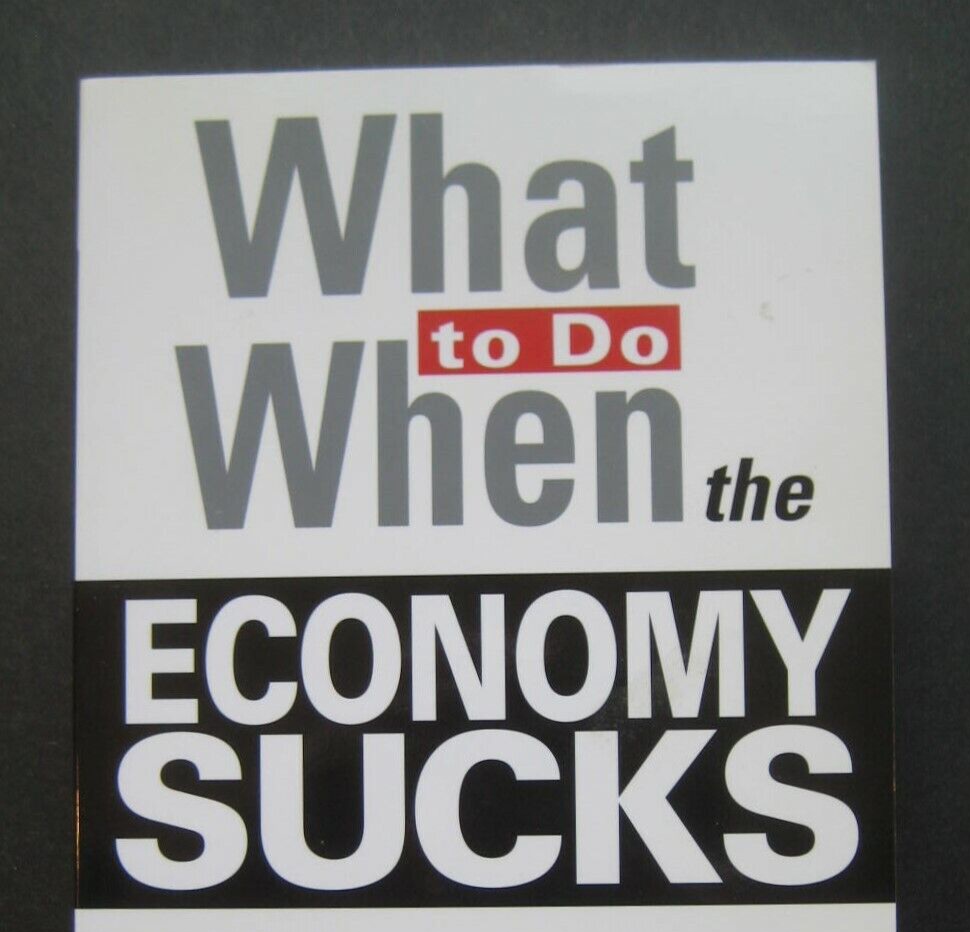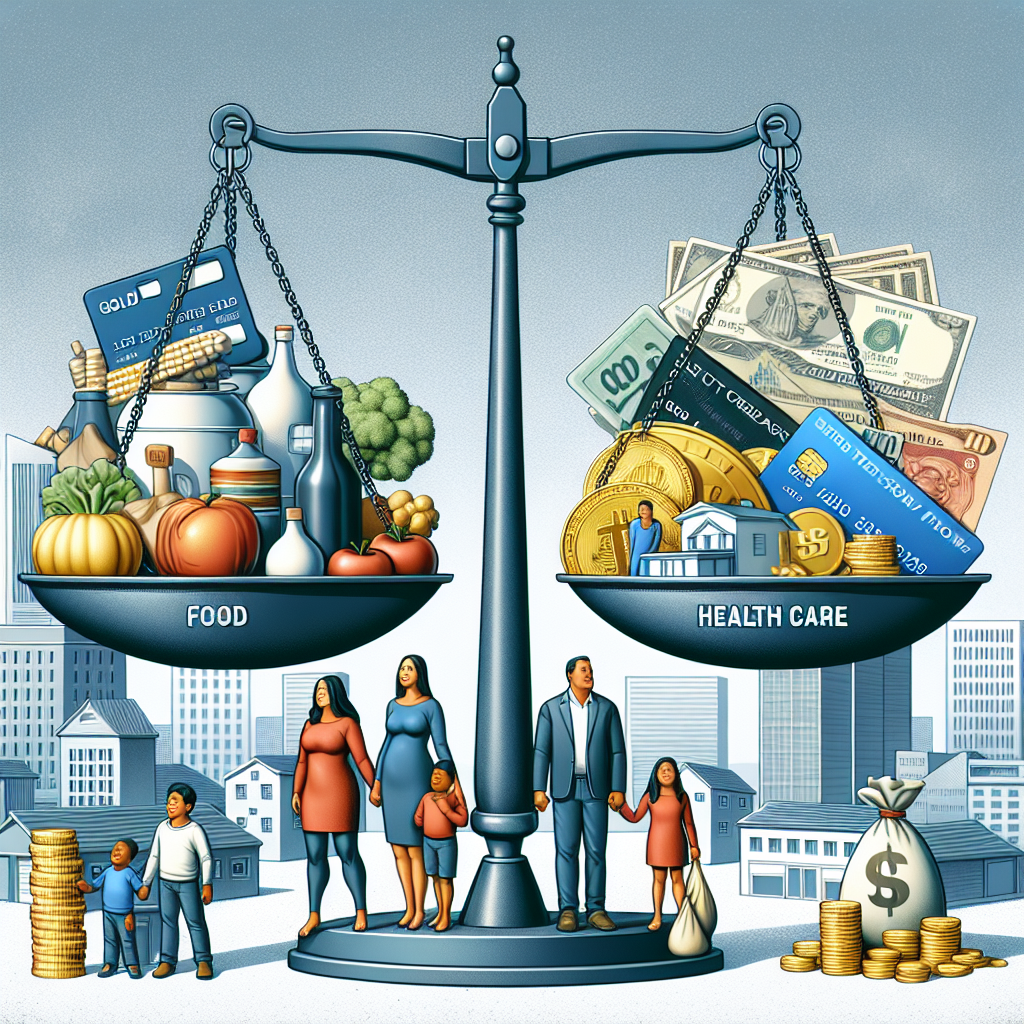
Why Is It Harder to Make Ends Meet Today Than It Was 10 Years Ago
Making ends meet today seems more challenging than it was a decade ago. You might have noticed that your paycheck doesn’t stretch as far as it used to.
This is not just your imagination. The cost of living has been on a steady rise, outpacing wage growth in many areas.
From housing and healthcare to food and transportation, everything seems to cost more making it harder to make ends meet. This trend is not just affecting your wallet, but also your mental well-being and future financial security.
In this article, we will delve into the factors contributing to the cost of living increase. We will explore why it’s harder to make ends meet today and what this means for your financial future.
We will also look ahead to the projected cost of living increase in 2025. Understanding these trends can help you better navigate the economic landscape and plan for the future.
Join us as we explore the modern economy and how it affects daily life. Let’s find ways to make ends meet.
Understanding the Cost of Living
The cost of living is the money needed for basic daily expenses. It makes it harder to pay bills and make ends meet. These expenses include housing, food, healthcare, and transportation. It’s an essential measure to understand how economic changes impact individuals and families.
A rise in the cost of living means you need more money to maintain your standard of living. This can lead to financial strain, especially if your income does not grow at the same rate. Many people find themselves living paycheck to paycheck due to this imbalance.
Components such as housing and healthcare often see the most significant increases. Other expenses like utilities and education also contribute to the growing financial burden. Notably, the costs can vary widely depending on the geographical area you live in.
Here’s a quick list of key components:
- Housing (rent or mortgage)
- Food and groceries
- Healthcare and insurance
- Transportation
- Utilities and internet
These components make up a significant portion of monthly expenses. Understanding them is crucial for effective budgeting and financial planning.
The Components of Cost of Living
Housing is typically the largest expense for most people. Whether you rent or own, housing costs have been rising steadily. This makes it harder for many to manage.
Food and groceries come next, influenced by global supply chain issues and inflation. Rising prices at the supermarket affect weekly budgets significantly.
Healthcare costs, too, have skyrocketed. Insurance premiums, deductibles, and out-of-pocket expenses add up quickly, putting pressure on family finances.
Historical Cost of Living Increases
Over the past decade, the cost of living has increased significantly making it hard to make ends meet. This trend has been more pronounced in urban areas where demand outstrips supply. Meanwhile, rural areas have also seen their share of increases.
Housing prices have risen year after year, leading to affordability issues for many. Even those who managed to purchase homes are burdened by substantial mortgage payments. According to data, rent and home prices have far outpaced wage increases.
Healthcare expenses have also played a considerable role in this rise making it harder to make ends meet. Premiums for both individual and family plans have gone up, affecting net income. This has left little room for savings or discretionary spending.
Finally, transportation and utility costs have surged, with energy prices being a major factor. This comprehensive increase underscores the challenge of sustaining a stable quality of life as costs continue to rise. Understanding these historical patterns is key in preparing for future economic shifts.
Wages vs. Expenses: A Growing Gap
The disparity between wages and living expenses has widened significantly over the past decade. While costs continue to climb, wages have not kept pace, contributing to financial stress. This gap leaves many individuals feeling economically insecure.
As expenses soar, stagnant wages limit financial growth and savings potential. Families face difficult choices between paying bills and saving for emergencies. This reality has forced many into a cycle of borrowing and debt to manage day-to-day expenses.
Moreover, the lack of substantial wage increases affects purchasing power. With expenses eating up more of the paycheck, less money is available for personal goals or enjoyment. This imbalance underscores the challenges of making ends meet.
Cost-of-living increases, coupled with slow wage growth, present a challenging landscape. Navigating this environment requires careful budgeting and strategic financial planning to avoid falling into financial peril. Understanding this growing gap is crucial for future financial security.
The Stagnation of Wage Growth
Wage stagnation remains a significant economic issue despite technological and productivity advances. In many industries, wage growth has lagged behind inflation, eroding real income. Workers are left with less purchasing power and more financial stress.
Several factors contribute to this stagnation. Globalization has increased competition, often leading to jobs moving to lower-cost regions. Automation and technology have also impacted job security, limiting opportunities for wage increases.
The effects of stagnation are far-reaching, impacting both current financial stability and future planning. As wages fail to grow, building savings or investing in education and skills becomes challenging. Individuals must seek alternative income streams to cope with these limitations.
Inflation and Purchasing Power
Inflation further complicates the wage-expense gap, eroding the value of money over time. As prices rise, each dollar buys less, diminishing purchasing power. This makes it difficult to sustain the same standard of living, even with consistent income.
For the average family, inflation means adjusting budgets to accommodate higher costs. Essentials such as groceries and utilities take a larger portion of income, leaving little for discretionary spending. These changes necessitate a reevaluation of priorities and financial planning.
Ultimately, inflation impacts everyone, though differently. Lower-income households feel these shifts more acutely, often lacking the flexibility to absorb rising costs. Understanding inflation’s role in economic life is crucial for long-term fiscal health. Adopting strategies to mitigate its impact can aid in maintaining financial balance.
Key Factors Driving Up Living Costs
Several key factors are contributing to the steep rise in living costs and trying to make ends meet. These elements affect various aspects of daily life, making financial management more challenging. Understanding these drivers is essential for addressing economic challenges.
Some of the primary factors include:
- Housing: Spiraling market prices and rent increases.
- Healthcare: Escalating premiums and out-of-pocket expenses.
- Education: Tuition fees and loan burdens impacting young adults.
Each of these factors plays a distinct role in household budgets. They not only increase monthly expenditures but also limit financial flexibility. These costs often demand larger portions of household income, affecting overall financial well-being.
Moreover, these making ends meet factors often overlap, compounding their effects. For instance, relocating for cheaper housing might increase transport costs. Hence, addressing these intertwined challenges requires careful planning and policy intervention.
Housing Market Trends
The housing market has seen dramatic shifts over recent years on how to make ends meet. Skyrocketing prices make homeownership a distant dream for many. This shift forces more people into the rental market, further driving up rental rates.
Rising rents and home prices consume a larger share of income. With wages lagging, affordable housing options diminish, increasing financial stress. This trend complicates efforts to build financial stability and savings.
Rising Healthcare Costs
Healthcare expenses have surged, straining family budgets across the nation making it harder to make ends meet. Insurance premiums and medical costs rise faster than many other expenses. This trend poses a significant financial challenge for countless households.
People often face tough decisions between essential medical care and other necessities. This strain impacts not just finances but also overall health and well-being. As healthcare costs continue to rise, so does the need for effective cost-containment measures.
Education and Childcare Expenses
The costs associated with education and childcare are significant financial burdens making it harder to make ends meet. College tuition has outpaced inflation for years, increasing student loan debts. Young adults start their careers saddled with massive financial obligations.
Childcare expenses also consume a large part of family budgets. This increases the pressure on parents, often restricting work opportunities. Balancing these costs requires strategic planning to ensure economic resilience.
Living Paycheck to Paycheck: The New Normal?
For many people today, living paycheck to paycheck is a tough reality. It makes it harder to pay the bills. This financial situation leaves little room for savings or unexpected expenses making it harder to make ends meet. Many individuals find themselves struggling to make ends meet month after month.
Without a financial cushion, even minor emergencies can lead to major stress. This precarious balance between income and expenses creates a cycle that’s tough to break. The lack of savings often forces people to rely on credit for unforeseen costs.
Rising living costs exacerbate this challenge, making financial stability elusive. People are forced to prioritize immediate needs over long-term goals. As expenses continue to climb, the strain of living on the edge persists.
The Psychological Toll of Financial Stress
Financial stress can have serious psychological impacts making it harder to make ends meet. Constant worry about money affects mental health. Anxiety and depression are common among those under financial duress.
The pressure to keep up with bills and expenses is unrelenting. This stress can affect relationships, work performance, and general well-being. Managing mental health is crucial when facing financial uncertainty.
Coping Strategies and the Gig Economy
To cope with rising costs, many turn to the gig economy. Flexible gig jobs offer additional income. These opportunities can help bridge financial gaps.
However, gig work often lacks stability and benefits. Despite the challenges, it provides a viable option for supplementing income. This strategy is vital for those seeking financial relief amidst economic uncertainty.
Looking Ahead: Cost of Living Increase 2025
As we look to the future, the cost of living is expected to continue its upward trajectory making it harder to make ends meet. Many factors contribute to this trend, from inflation to economic policies. Understanding these elements can help individuals and families brace for changes.
Preparing for potential cost of living increases in 2025 requires awareness and planning. Anticipating rising prices in housing, healthcare, and education is crucial. Proactive steps can mitigate the financial impact on day-to-day life.
Navigating future economic changes demands adaptability and resourcefulness. By staying informed, individuals can make strategic decisions. Preparation is key to maintaining financial stability amidst uncertain times.
Future Economic Challenges and Projections
Economic projections indicate potential challenges ahead making it harder to make ends meet. Inflation may continue to erode purchasing power. Rising costs could strain finances further, impacting daily living.
Understanding these trends helps in planning effectively. Individuals can adjust their financial strategies. Knowing what to expect aids in making informed decisions.
Preparing for Tomorrow: Financial Literacy and Planning
Financial literacy is essential for managing rising costs making it harder to make ends meet. Educating oneself on budgeting, saving, and investing is invaluable. These skills help in navigating economic fluctuations.
Planning for the future involves more than just saving money. It’s about understanding expenses and income. Strategic planning can shield individuals from financial shocks.
Conclusion: Adapting to Economic Changes
Adapting to economic shifts is crucial for financial resilience. As living costs rise, staying informed and flexible becomes essential. Leveraging financial literacy and strategic planning enables individuals to face future challenges with confidence.
Economic changes are inevitable, yet adaptability can ease the transition. By embracing change and honing financial skills, individuals can better manage their financial futures and maintain stability despite uncertainties.

